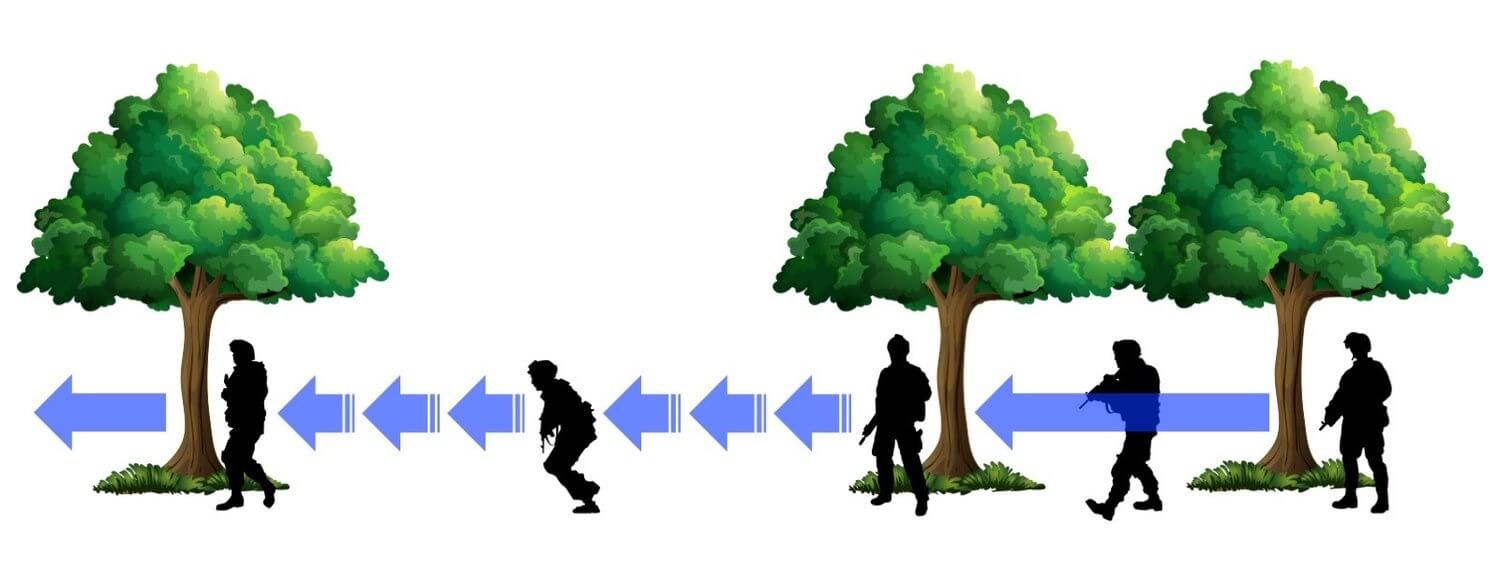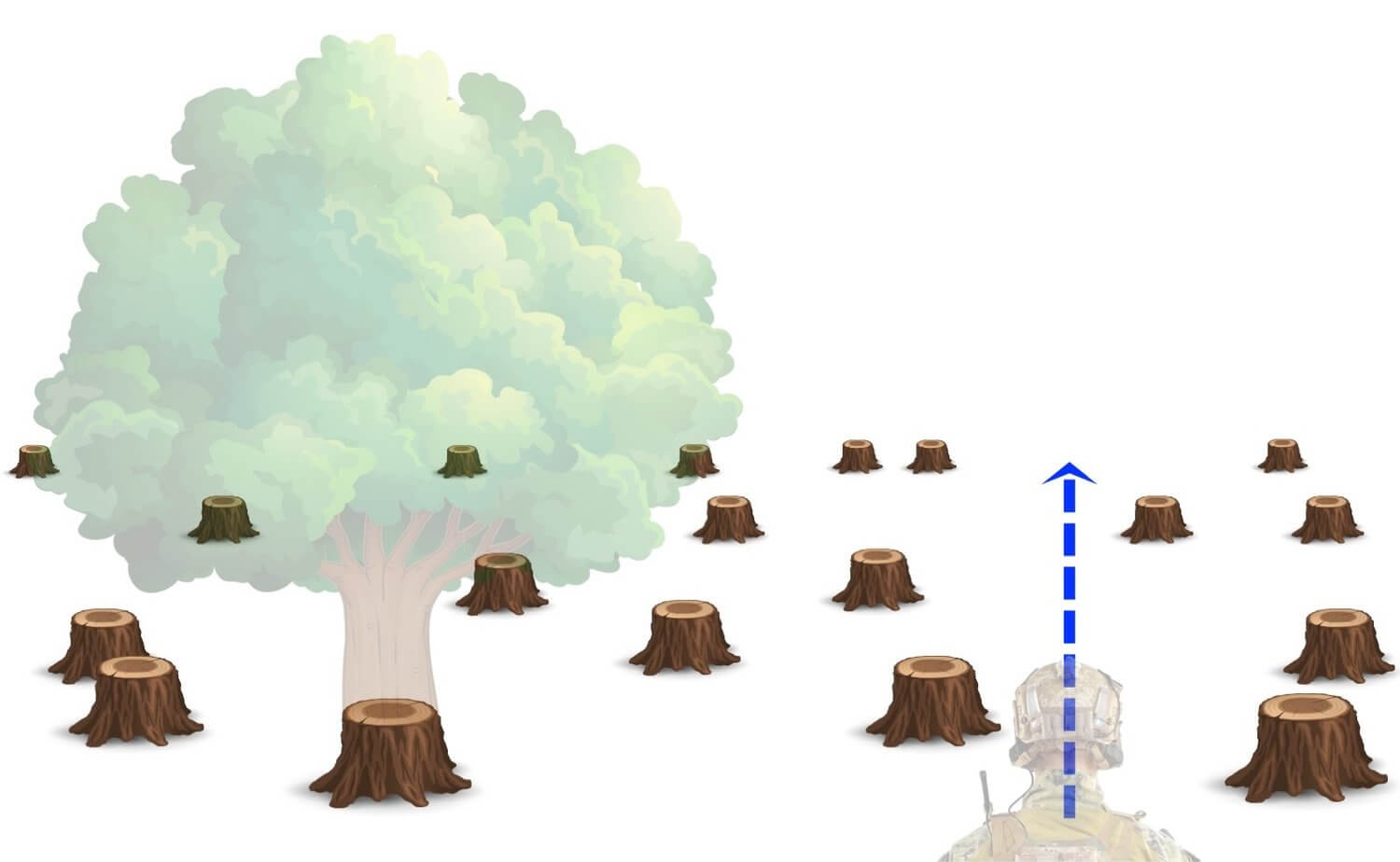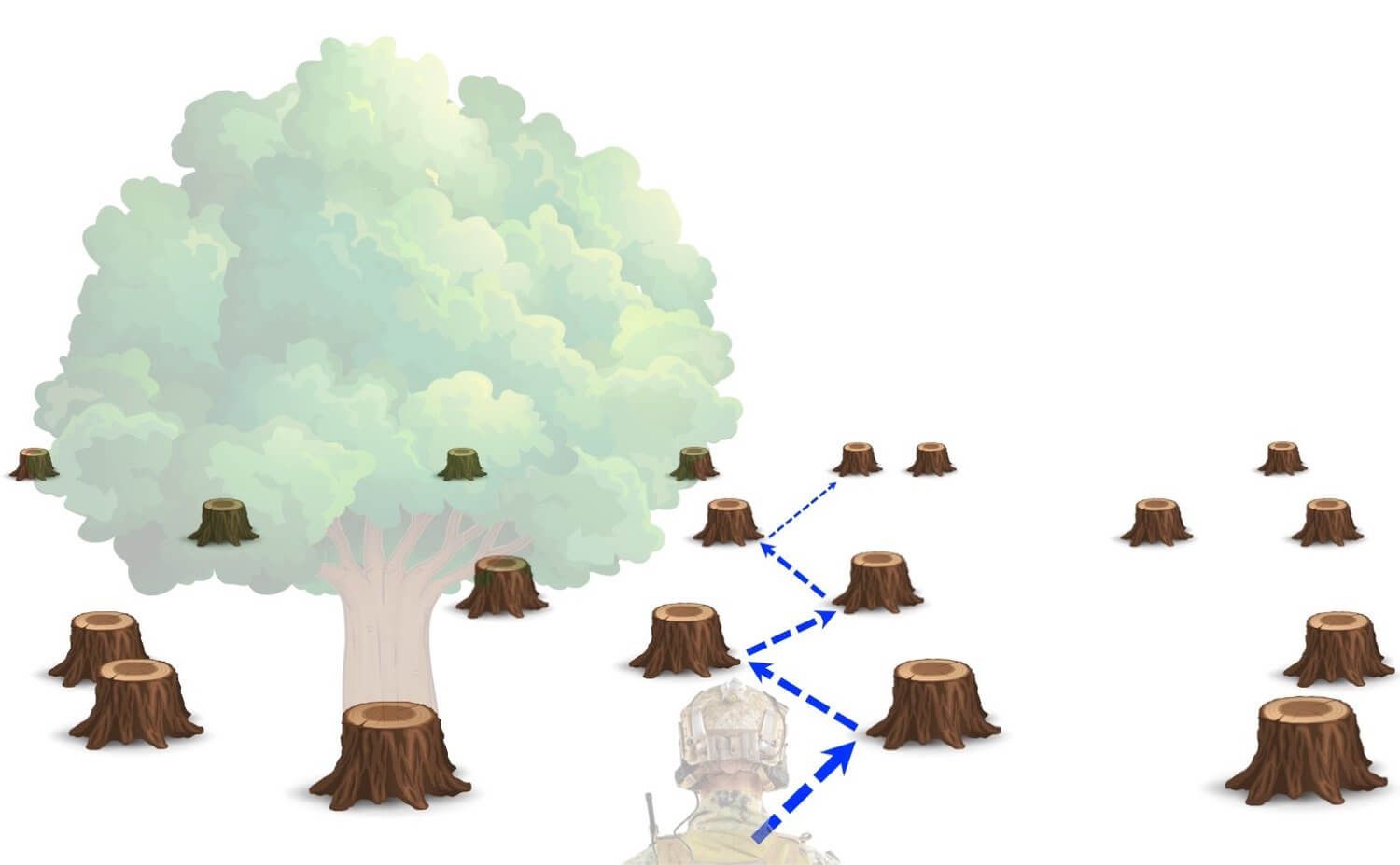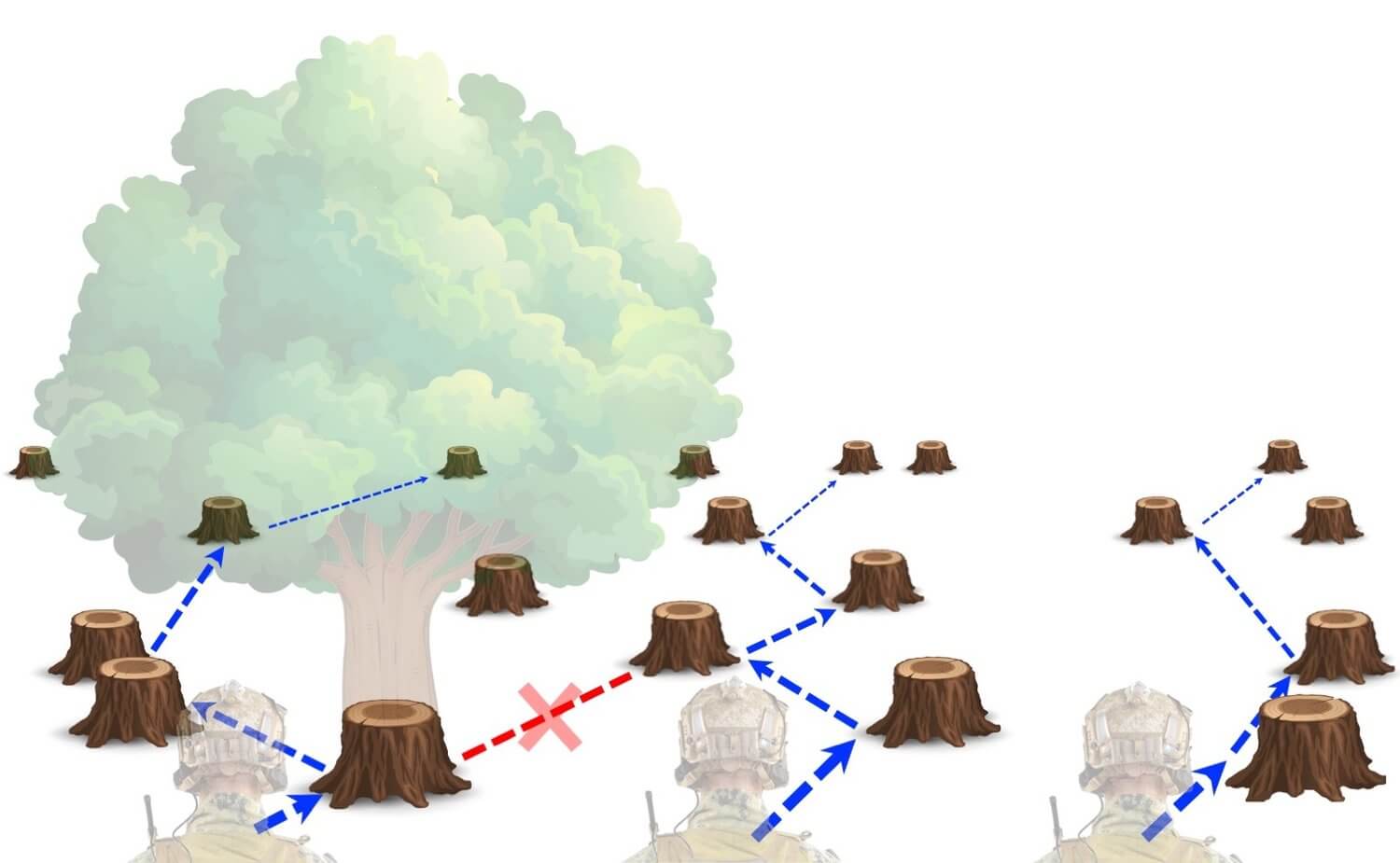Tactical Movement - Part 1

Individual Tactical Movement Part 1:
Moving from Cover-to-Cover
While it may seem like the most elementary topic, you may be shocked at how frequently proper tactical movement and continuous use of cover are completely ignored.
Even if you and your unit master tactical movement formations and techniques, you may still find yourself at a great disadvantage in combat against an enemy who knows how to apply movement formations and techniques to real-world combat situations.
A common mistake is to simply walk in a straight line without paying attention to the surrounding terrain. This often happens when individual squad members are too focused on maintaining the exact “shape” of the formation, or when they are simply fatigued and not paying attention. Whatever the reason, if you find yourself walking in a straight line and your squad unexpectedly takes fire, you may find yourself out in the open when the bullets start flying.
This brings up the question of whether you should immediately dive to the ground, or sprint to the nearest covered position and then go to the ground. Ideally, with more forward thinking and superior individual movement techniques, you will not even have to make that decision.
The following picture illustrates how an individual squad member can simply walk forward in a straight line without any regard for cover, concealment or the surrounding terrain.
Even if you and your unit master tactical movement formations and techniques, you may still find yourself at a great disadvantage in combat against an enemy who knows how to apply movement formations and techniques to real-world combat situations.
A common mistake is to simply walk in a straight line without paying attention to the surrounding terrain. This often happens when individual squad members are too focused on maintaining the exact “shape” of the formation, or when they are simply fatigued and not paying attention. Whatever the reason, if you find yourself walking in a straight line and your squad unexpectedly takes fire, you may find yourself out in the open when the bullets start flying.
This brings up the question of whether you should immediately dive to the ground, or sprint to the nearest covered position and then go to the ground. Ideally, with more forward thinking and superior individual movement techniques, you will not even have to make that decision.
The following picture illustrates how an individual squad member can simply walk forward in a straight line without any regard for cover, concealment or the surrounding terrain.

It is better for every individual unit member to move from cover to cover, even when when enemy contact is not likely. Looking at the same diagram above, if you had moved just a few meters to your left you would have been walking along a path with plenty of available covered and concealed positions.
You don’t actually need to take cover behind every one of these positions; but, should you come under fire at any given moment, you are either already behind cover and all you have to do is get down, or you are already moving towards the next piece of cover and you will not be caught in the open for long.
You don’t actually need to take cover behind every one of these positions; but, should you come under fire at any given moment, you are either already behind cover and all you have to do is get down, or you are already moving towards the next piece of cover and you will not be caught in the open for long.

Moving as a Unit
When moving as a unit, each individual unit member should use the same technique of proceeding from one covered position to the next. The team or squad can still maintain its spacing, formation and general orientation, but positioning will adjust as needed based on the surrounding terrain.
When moving from cover to cover as a unit, you must also consider where teammates may take cover.
For example, in the graphic below, the team member on the far left should not move along the dotted red line and take cover behind the tree to his front right. Even though there is nothing wrong with taking cover behind that tree when moving as an individual, when moving as a team you must consider that the team member to your right will take cover behind that tree. While it is possible for two team members to take cover behind the same object, it is preferable to stay spread out if possible.
When moving from cover to cover as a unit, you must also consider where teammates may take cover.
For example, in the graphic below, the team member on the far left should not move along the dotted red line and take cover behind the tree to his front right. Even though there is nothing wrong with taking cover behind that tree when moving as an individual, when moving as a team you must consider that the team member to your right will take cover behind that tree. While it is possible for two team members to take cover behind the same object, it is preferable to stay spread out if possible.

Also, when moving from cover to cover, you shouldn’t just change direction, you should also change speed.
Pick up the pace when moving between cover and slow down or even stop momentarily when you are close to cover. If there are big gaps between covered positions you may even want to run. Speeding up between covered positions reduces the time you spend exposed in the open. However, when you move fast it is harder to hear the enemy or spot movement around you. Therefore, when you are moving fast, you might as well focus your attention on the path in front of you, looking out for obstacles and making sure you do not trip. Then, when you slow down or stop next to each piece of cover, take that time to carefully look around you for the enemy and listen for threats. (Of course, be aware that you may be increasing your own noise level output as you move more quickly, and this may not be desirable in all circumstances.)
Before you speed up again and move to the next covered position, quickly make eye contact with your fellow teammates to make sure no one is trying to signal you or drifting out of contact. Finally, identify the next covered position before you speed up, then pick up the pace to reach the next position.
Pick up the pace when moving between cover and slow down or even stop momentarily when you are close to cover. If there are big gaps between covered positions you may even want to run. Speeding up between covered positions reduces the time you spend exposed in the open. However, when you move fast it is harder to hear the enemy or spot movement around you. Therefore, when you are moving fast, you might as well focus your attention on the path in front of you, looking out for obstacles and making sure you do not trip. Then, when you slow down or stop next to each piece of cover, take that time to carefully look around you for the enemy and listen for threats. (Of course, be aware that you may be increasing your own noise level output as you move more quickly, and this may not be desirable in all circumstances.)
Before you speed up again and move to the next covered position, quickly make eye contact with your fellow teammates to make sure no one is trying to signal you or drifting out of contact. Finally, identify the next covered position before you speed up, then pick up the pace to reach the next position.

©Copyright Special Tactics, LLC. Published with permission.
Iron Survival, LLC
Featured links
Policy Pages
©Copyright 2026 Iron Survival, LLC
